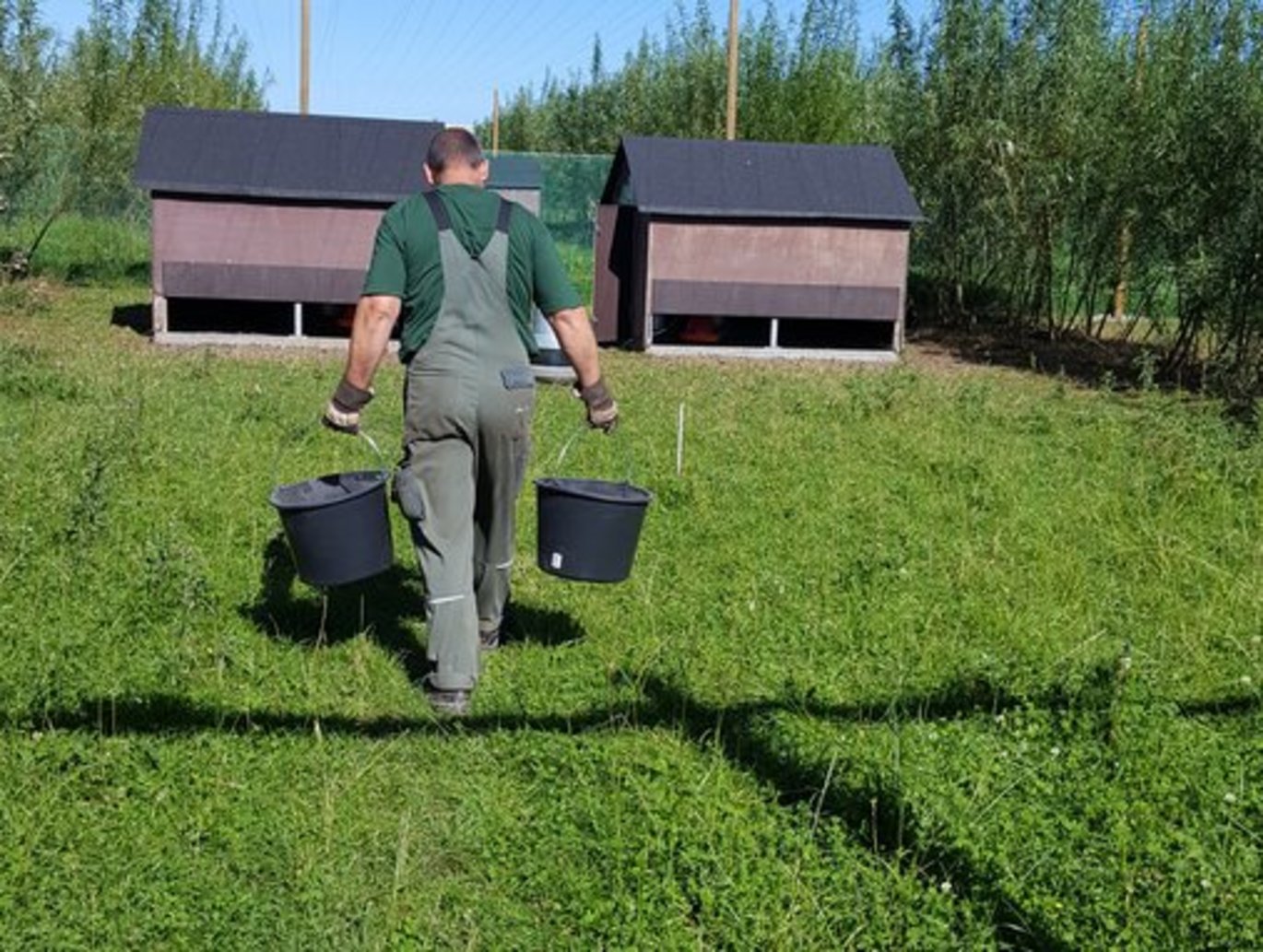Grass-clover protein can partly substitute traditional feed protein for broilers
According to a new study from Aarhus University, protein produced by biorefining of grass-clover can replace at least 13 % of the traditional feed protein used for organic broilers without compromising production parameters.

In the Organic RDD project MultiPlant, a feeding trial with organic broilers has just been finalized, where the feed value of protein extracted from grass-clover was investigated. According to the study, it is possible to replace at least 13 % of the traditional feed protein with grass-clover protein without reducing slaughter weight or feed efficiency.
In the search for locally grown and sustainable protein sources to cover the increasing demand in the organic livestock sector, attention is directed towards forage mixtures like grass-clover. These mixtures are high yielding in terms of both dry matter and protein. Through biorefining, the plants are processed into a juice from which proteins can be isolated into a dried protein concentrate. Because processing removes the majority of plant fibers, the protein concentrate is expected to be suitable as feed protein for monogastric animals such as pigs and poultry.
At least 13% of traditional feed protein can be replaced
As part of the MultiPlant project, the effect of replacing traditional feed protein with extracted grass-clover protein for organic broilers was investigated. The broilers were fed organic broiler feed containing either 0, 8, 16, or 24 % grass-clover protein corresponding to a replacement of 0, 13, 26 or 39 % of the traditional protein with grass-clover protein. All diets were optimized to meet broilers nutritional and energy requirement. This first generation protein concentrate used in the present experiment, was extracted from organic grass-clover using a twin-screw press and lactic acid fermentation of the plant juice. The crude protein content was 36 % with a methionine content higher that found in soybean meal. The trial lasted from hatching and until the broilers were slaughtered at day 57. Throughout the period, growth and feed intake were registered.
At least 13 % of the traditional feed protein could be replaced with grass-clover protein without reducing slaughter weight, feed intake or feed efficiency. But the study also demonstrated, that a high inclusion of grass-clover protein (24%) resulted in lower weight and feed efficiency. This effect was primarily seen early in the trial with the young broilers, whereas older broilers had higher tolerance for inclusion of grass-clover protein. During biorefining of the grass-clover, some plant fibers are distributed to the extracted protein fraction together with the protein resulting in a fiber content of approx. 30 % in the first generation product. As many of these fibers are insoluble with low digestibility, these are expected to challenge high inclusions of grass-clover protein. The biorefining process has been optimized through 2018 and new protein concentrates have been made with a crude protein content of approx. 50 %. These massive improvements are expected to increase the feed value significantly because of the associated reduction in fiber content and increased digestibility.
The study from MultiPlant also reports a high content of unsaturated fatty acids in the protein concentrate from grass-clover, where the omega 3 fatty acid ?-linolenic acid dominates. The high content of ?-linolenic acid can be recovered in the breast meat and fat from the broilers where increased addition of grass-clover protein increases the content of this nutritionally important fatty acid. In addition, it was clear, that the carotenoids found in the plants and hence in the grass-clover protein are deposited into both meat and fat manifested as a clear yellow colorization. How these findings affect meat quality, consumer acceptance and shelf life of the meat will need more investigations.
MultiPlant is part of the Organic RDD2 programme, which is coordinated by ICROFS (International Centre for Research in Organic Food Systems). The project has received grants from “Grønt Udviklings-og Demonstrationsprogram (GUDP)” under the Ministry of Environment and Food of Denmark.